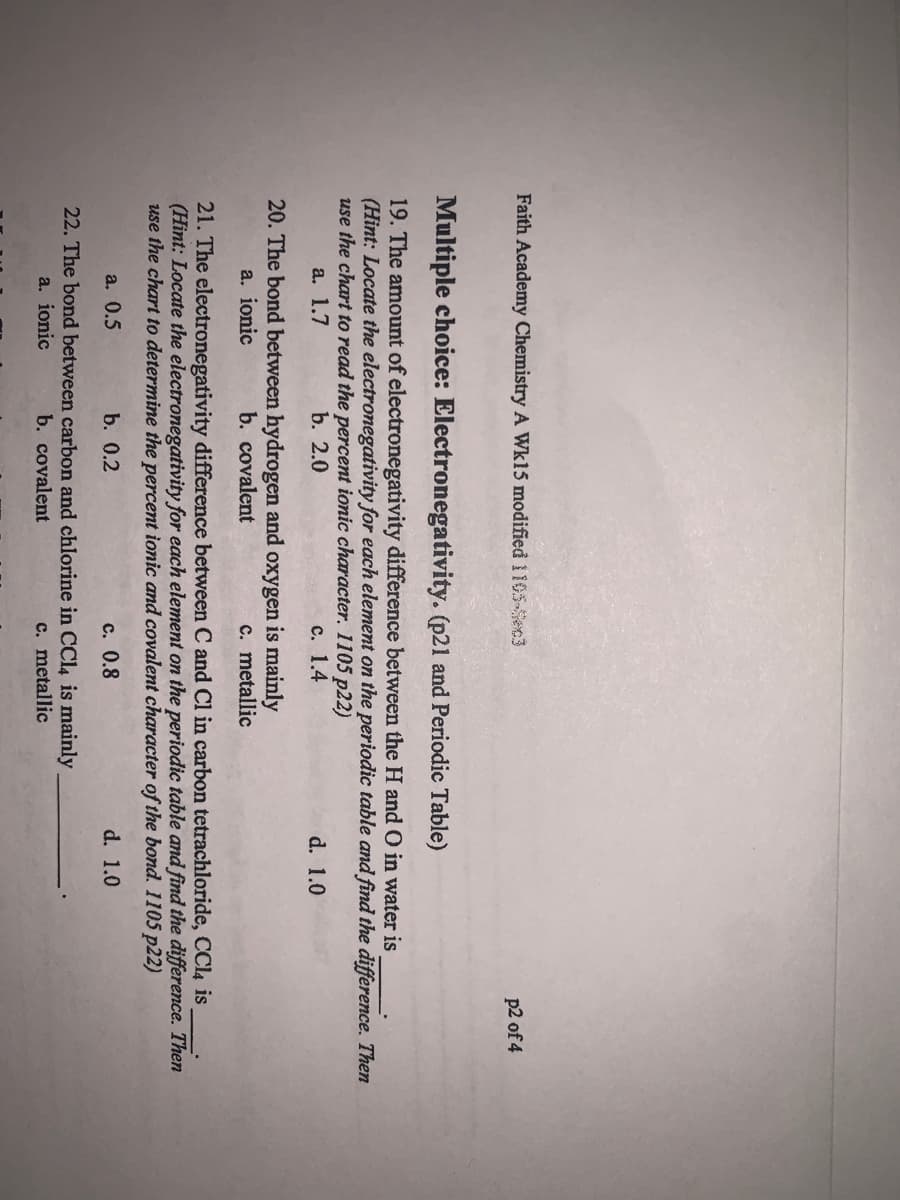Faith Academy Chemistry A Wk15 modified 1105-Sec3 p2 of 4 Multiple choice: Electronegativity. (p21 and Periodic Table) 19. The amount of electronegativity difference between the H and O in water is (Hint: Locate the electronegativity for each element on the periodic table and find the difference. Then use the chart to read the percent ionic character. 1105 p22) а. 1.7 b. 2.0 с. 1.4 d. 1.0 20. The bond between hydrogen and oxygen is mainly a. ionic b. covalent c. metallic 21. The electronegativity difference between C and Cl in carbon tetrachloride, CCl4 is (Hint: Locate the electronegativity for each element on the periodic table and find the difference. Then use the chart to determine the percent ionic and covalent character of the bond. 1105 p22) a. 0.5 b. 0.2 с. 0.8 d. 1.0 22. The bond between carbon and chlorine in CC14 is mainly a. ionic b. covalent c. metallic
Formal Charges
Formal charges have an important role in organic chemistry since this concept helps us to know whether an atom in a molecule is neutral/bears a positive or negative charge. Even if some molecules are neutral, the atoms within that molecule need not be neutral atoms.
Polarity Of Water
In simple chemical terms, polarity refers to the separation of charges in a chemical species leading into formation of two polar ends which are positively charged end and negatively charged end. Polarity in any molecule occurs due to the differences in the electronegativities of the bonded atoms. Water, as we all know has two hydrogen atoms bonded to an oxygen atom. As oxygen is more electronegative than hydrogen thus, there exists polarity in the bonds which is why water is known as a polar solvent.
Valence Bond Theory Vbt
Valence bond theory (VBT) in simple terms explains how individual atomic orbitals with an unpaired electron each, come close to each other and overlap to form a molecular orbital giving a covalent bond. It gives a quantum mechanical approach to the formation of covalent bonds with the help of wavefunctions using attractive and repulsive energies when two atoms are brought from infinity to their internuclear distance.

Step by step
Solved in 2 steps with 2 images







